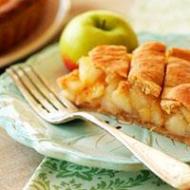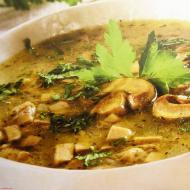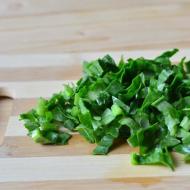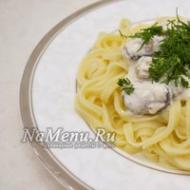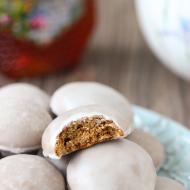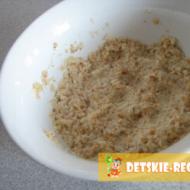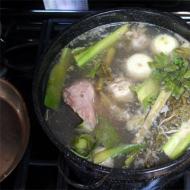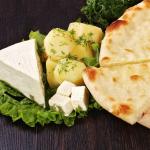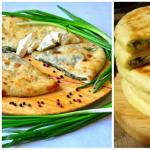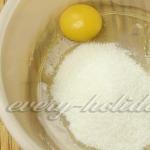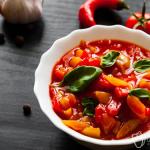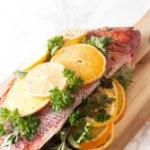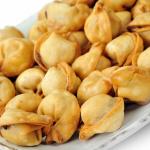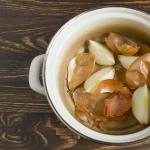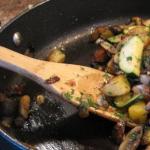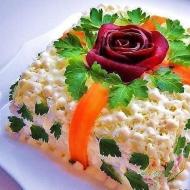
How to make jam. How to cook jam. Emerald green gooseberry jam
Cooking jam is one of the most common ways of processing and harvesting fruits and berries at home. Good, properly cooked jam is considered if the shape of the berries has not changed, only their color has become darker and the aroma of fresh fruits has been preserved.
To keep the jam for a long time, it is necessary to observe the established rate of sugar consumption when cooking it. If you add less sugar to the fruits and berries than required by the recipe, or do not bring the cooking to the end, such jam may be unstable during storage: it will ferment and become completely unusable.
Spoilage of jam, despite a sufficient amount of sugar, can also occur due to packaging in a damp, poorly washed and undried container and subsequent storage in a damp, unventilated room.
There are many ways to cook jam, based on the characteristics of various fruits and berries. However, there are general techniques and requirements for cooking jam from any raw material.
For cooking jam, it is recommended to use basins with a capacity of 2 to 6 kg, made of stainless steel or brass. It is not recommended to use basins of a larger capacity, since when cooking, tender berries, such as raspberries, strawberries, can be crushed in them, and the jam will turn out to be boiled. In addition, when cooking a large volume of berries, the time of their cooking is significantly extended, which also negatively affects the quality of the jam.
The best containers for packaging and storage of finished jam are glass jars with a capacity of 0.5; 1; 2 l. Before packaging, the jars should be washed in hot water, preferably with soda ash or other detergent, until completely clean, then rinsed with clean boiling water and turned upside down to drain the water. After that, the jars are dried on the stove until the moisture is completely removed. Just before packaging, the jars must be completely dry and hot.
Regardless of the heat source used, the jam should be cooked for no more than 30-40 minutes, excluding the time of its exposure. In the first 5-10 minutes from the moment of boiling, the jam should be simmered over low heat, since during this period the greatest foaming is observed, and the contents of the basin may boil away. With a decrease in the intensity of foam formation and as the syrup thickens, the fire must be increased, however, making sure that the jam cooks evenly and does not overflow over the edge of the basin.
The syrup in which the fruits or berries are located must be transparent and colored in a color that is characteristic of these fruits or berries. It should not have any brownish or brown tint. The latter indicates that the jam was overcooked or cooked over high heat.
The syrup should be thick enough so that it does not drain quickly from the surface of the spoon. The jam should have an equal amount of berries and syrup. Excess or insufficient amount of syrup indicates a violation of the rules for cooking jam.
Fruits and berries, which are intended for cooking jam, are harvested on the day of their cooking in sunny and dry weather and after they have dried from dew. It is not recommended to pick berries in rainy weather. It is important that the berries and fruits are of the same degree of maturity. Unripe and overripe fruits and berries are unsuitable for making jam. Raspberries and strawberries should be collected in sieves or wicker baskets with a capacity of no more than 2-3 kg.
Raspberries and strawberries, collected from the garden plot and not having any pollution, can not be washed. In all other cases, they are washed, like other types of fruits and berries. Washing must be done after sorting, and for some berries even after cleaning (for example, after removing the sepals from strawberries, the stalks from raspberries and the calyxes from currants) in cold clean running water.
Delicate berries should be washed for 1-2 minutes under running water or by repeated immersion in water in a dish with a slatted bottom (basket, colander). After washing, the berries and fruits must be kept for 15-20 minutes in a sieve so that water is drained from them and they dry out a little.
The most common is the cooking of fruits and berries in sugar syrup. To prepare the latter, a pre-measured amount of granulated sugar is poured into a clean brass or other basin, an enameled pan, and poured with cold or hot water, after which the dishes are placed on medium heat and stirred with a spoon or slotted spoon until the sugar is completely dissolved. Then the syrup must be brought to a boil. After 1-2 minutes of boiling, the dishes are removed from the heat, and the syrup is considered ready for use.
Both the quality of the cooked jam and its ability for long-term storage depend on the correctly chosen ratio of parts of sugar and berries or fruits. In the absence of scales, you can determine the weight of sugar by volume: one glass contains 200 g of sugar, in a liter jar - 800 g, in a half-liter jar - 400 g.
Before starting cooking, you should prepare the necessary utensils: a deep plate for foam, a tablespoon or slotted spoon. After everything is cooked, put the basin with syrup on moderate heat, carefully pour the measured amount of berries into it and mix them well with the syrup. To do this, the pelvis can be taken with both hands and shaken in a circular motion. The syrup must necessarily cover the fruits or berries. Berries filled with hot syrup are left for 3-4 hours. If you start cooking the jam immediately, and even on high heat, the syrup will not have time to soak into the berries, and the latter will wrinkle and become very soft.
Berries and fruits with hard skins (gooseberries, ranet, plums) are pierced with a sharp wooden stick so that the syrup is better absorbed. Blackcurrant must first be blanched, that is, dipped in boiling water for 2-3 minutes, and then cooled. If this is not done, the berries in cold jam will turn out to be too dry.
It is necessary to carefully monitor the cooking process and ensure that the jam does not boil away. The fire must be maintained all the time uniform, not very strong, but not very weak, adjusting it depending on the foaming. At the beginning of cooking, after 3-5 minutes from the moment the jam boils, the basin should be removed from the heat, shaken slightly with both hands, remove foam from the surface and put on fire again. Cooking continues until a new appearance of foam, which is removed again.
This is done until the profuse foaming stops. After this happens, and the mass begins to boil more slowly at the same fire power, this means that the cooking of the jam is nearing its end. This point must be monitored very carefully, otherwise the jam will be overcooked.
To avoid burning during cooking, the basin should be turned frequently and the berries or fruits should be stirred very carefully with a slotted spoon or spoon.
Delicate berries - raspberries, blackberries, strawberries, cherries, small plums, pitted cherries, currants - are boiled in several steps, with breaks of 8-10 hours. For the first time, the syrup with berries is only brought to a boil and put on hold. The second time, the jam is boiled for 10-15 minutes and aged again. Only the third time it can be brought to readiness over high heat. Strawberries, cherries, cherries and pitted plums can be cooked in one go - first on low, then on high heat.
Easily boiled berries can be cooked in the following way. Slightly boiled in syrup, the berries are carefully removed with a slotted spoon or strainer, and the syrup continues to boil. Not long before the end of cooking, the berries are again dipped into the syrup, brought to a boil again and then corked.
It is important to be able to determine the degree of readiness of jam. The following methods for determining the readiness of jam by external signs are quite common.
1. Take a little syrup from the basin with a spoon, and if it flows from the spoon with a thick, rather than liquid and thin thread, it means that the jam is ready.
2. The cooled sample is carefully poured from a teaspoon onto a plate. If the syrup has not melted, the jam can be considered ready.
3. Jam can also be considered ready if, after boiling has stopped, its surface in the basin is quickly covered with a thin wrinkled film.
If during cooking the jam remains liquid for a long time, which often happens, for example, with cherry jam, you can add a little lemon juice or apple jelly to it. After that, the jam will thicken quickly.
After cooking, the jam is immediately poured into clean, pre-prepared dishes - aluminum and enameled bowls or pans without cracks. In no case should you use cast-iron or iron utensils for aging jam. Since in such dishes the color of the jam deteriorates.
Before packaging, the jam is usually cooled for 8-10 hours. Some types of jam, in which fruits are quickly soaked with sugar (blackcurrant, strawberry, cranberry, etc.), can also be packaged hot without prior aging.
For long-term storage, it is best to package jam in glass or proven clay containers of small capacity - 0.5; 1 and 2 l. After the jam has completely cooled, the container is tightly sealed.
The kernels of the stones of apricots, cherries, plums and peaches contain a substance that in the body, by decomposition, turns into a strong poison - hydrocyanic acid.
With long-term storage of jam from fruits with stones, its amount increases, therefore it is not recommended to store such jam for more than a year. If the jam has been stored longer than this period, the syrup is drained, the seeds are removed from the fruits, the pulp is mixed with syrup and boiled for 30-40 minutes, after which the danger of poisoning is removed.
It is necessary to store jam at a temperature of 10-15 ° C.
If the finished jam gets water or is undercooked, or if there is not enough sugar in it, the jam can ferment. In this case, it must be digested by adding a little sugar.
If the jam becomes moldy, then it is either poorly packaged or stored in a too damp room. It is necessary to remove the mold, boil the jam and put it in another, drier place.
There are many recipes for cooking jam, based on the characteristics of various fruits and berries. However, there are general techniques and requirements for cooking jam from any raw material.
The ideal utensils for cooking jam are basins with a capacity of 2 to 6 liters, made of stainless steel or brass. Basins of larger capacity are not recommended, since tender berries, such as raspberries, strawberries, can be crushed in them, and the jam will turn out to be boiled. In addition, when using a large volume of berries, their cooking time is significantly extended, which also negatively affects the quality of the jam. Therefore, for cooking jam, it is recommended to use basins with low sides.
Jam packaging
The best containers for packaging and storage of finished jam are glass jars with a capacity of 0.5; 1; 2 l. Pre-wash the jars in hot water, preferably with soda ash or other detergent, until completely clean, then rinse with clean boiling water and turn upside down to drain the water. After that, the jars are dried in the oven until the moisture is completely removed. Just before packaging the finished jam, the jars must be completely dry and hot.
Regardless of the heat source used, the jam should be cooked for no more than 30-40 minutes, excluding the time of its exposure. In the first 5-10 minutes from the moment of boiling, the jam should be simmered over low heat, since during this period the greatest foaming is observed, and the contents of the basin may boil away. With a decrease in the intensity of foam formation and as the syrup thickens, the fire must be increased, making sure that the jam boils evenly and does not overflow over the edge of the basin.
The jam syrup containing fruits or berries must be transparent and colored in a color that is characteristic of these fruits or berries. It should not have any brownish or brown tint. The latter indicates that the jam was overcooked on fire or cooked on too high a fire.
It should be thick enough so that it does not drain quickly from the surface of the spoon. The jam should have an equal amount of berries and syrup. Excess or insufficient amount of syrup indicates a violation of the rules for cooking jam.
Fruits and berries that are intended for jam are harvested on the day of cooking in sunny and dry weather, after they have dried from dew. It is not recommended to pick berries in rainy weather. It is important that the berries and fruits are of the same degree of maturity.  Unripe and overripe fruits and berries are unsuitable for making jam. Raspberries and strawberries should be collected in sieves or wicker baskets with a capacity of no more than 2-3 kg.
Unripe and overripe fruits and berries are unsuitable for making jam. Raspberries and strawberries should be collected in sieves or wicker baskets with a capacity of no more than 2-3 kg.
If the berries collected from the plot do not have any contamination, you can not wash them. In all other cases, fruits and berries are washed. Washing must be done after sorting, and for some berries even after cleaning (for example, after removing the sepals from strawberries, the stalks from raspberries and the calyxes from currants) in cold clean running water.
Delicate berries should be washed for 1-2 minutes under running water or by repeated immersion in water in a dish with a slatted bottom (basket, colander). After washing, the berries and fruits must be kept for 15-20 minutes in a sieve so that water is drained from them and they dry out a little. After that, you can start cooking jam.
The most common is the cooking of fruits and berries in sugar syrup. To prepare the latter, a pre-measured amount of granulated sugar is poured into a clean brass or other basin, an enameled pan, and poured with cold or hot water, after which the dishes are placed on medium heat and stirred with a spoon or slotted spoon until the sugar is completely dissolved. Then the syrup must be brought to a boil. After 1-2 minutes of boiling, the dishes are removed from the heat, and the syrup is considered ready for use.
Both the quality of the jam and its ability for long-term storage depend on the correctly chosen ratio of parts of sugar and berries or fruits. In the absence of scales, you can determine the weight of sugar by volume: one glass contains 200 g of sugar, in a liter jar - 800 g, in a half-liter jar - 400 g.
jam cooking involves some operations for which you need to prepare. Before the beginning jam cooking you should prepare the necessary utensils: a deep plate for foam, a tablespoon or slotted spoon. After everything is cooked, put the basin with the syrup on a moderate fire, carefully pour the measured amount of berries into it and mix them well with the syrup. To do this, you can take the basin with both hands and shake it in a circular motion. The syrup must necessarily cover the fruits or berries. The berries filled with hot syrup are left for 3-4 hours. If you start cooking the jam immediately, and even over high heat, the syrup will not will have time to soak into the berries, and the latter will wrinkle and become very boiled.

Berries and fruits with hard skins (gooseberries, ranet, plums) are pierced with a sharp wooden stick so that the syrup is better absorbed. Blackcurrant must first be blanched, that is, dipped in boiling water for 2-3 minutes, and then cooled. If this is not done, the berries in cold jam will turn out to be too dry.
It is necessary to carefully monitor the cooking process and ensure that the jam does not boil away. The fire must be maintained all the time uniform, not very strong, but not very weak, adjusting it depending on the foaming. At the beginning of cooking, after 3-5 minutes from the moment the jam boils, the basin should be removed from the heat, shaken slightly with both hands, remove foam from the surface and put on fire again. Cooking continues until a new appearance of foam, which is again removed.
This is how they act until the abundant pricing stops. After this happens and the mass begins to boil more slowly at the same fire power, this means that the cooking of the jam is nearing its end. This point must be monitored very carefully, otherwise the jam will be overcooked. To avoid burning, the basin should be turned frequently and the berries or fruits should be stirred very carefully with a slotted spoon or spoon.
Berry jam
Delicate berries - raspberries, blackberries, strawberries, cherries, small plums, pitted cherries, currants - are boiled in several steps, with breaks of 8-10 hours. For the first time, the syrup with berries is only brought to a boil, and then put on aging. The second time, the jam is boiled for 10-15 minutes and aged again. Only the third time it can be brought to readiness over high heat. Strawberries, cherries, cherries and pitted plums can be cooked in one go - first on low, then on high heat.
With easily boiled berries, you can do the following. Slightly boiled in syrup, the berries are carefully removed with a slotted spoon or strainer, and the syrup continues to boil. Shortly before the end of cooking, the berries are again dipped into the syrup, brought to a boil again, and then the finished jam is corked.
When the jam is ready
It is important to be able to determine the degree of readiness of jam. The following methods are quite common:
1. A little syrup is taken from the basin with a spoon, and if it flows from the spoon in a thick mass, and not a liquid and thin thread, this means that the jam is not yet ready.
2. The cooled sample is carefully poured from a teaspoon onto a plate. If the syrup has not melted, the jam can be considered ready.
If during cooking the jam remains liquid for a long time, which often happens, for example, with cherry jam, you can add a little lemon juice or apple jelly to it. After that, the jam will thicken quickly.
After cooking, the jam is immediately poured into clean, pre-prepared dishes - aluminum and enameled bowls or pans without cracks. In no case should you use cast-iron or iron dishes for aging jam, as the color of the jam worsens in it.
Before packaging, the jam is usually cooled for 8-10 hours. Some types of jam, in which fruits are quickly soaked with sugar (blackcurrant, strawberry, cranberry, etc.), can also be packaged hot without prior aging.
For long-term storage, it is best to package jam in glass or proven clay containers of small capacity - 0.5, 1 and 2 liters. After the jam has completely cooled, the container is tightly sealed.
 The kernels of the stones of apricots, cherries, plums and peaches contain a substance that in the body, by decomposition, turns into a strong poison - hydrocyanic acid. With long-term storage of jam from fruits with stones, its amount increases, therefore it is not recommended to store such jam for more than a year. If the jam has been stored longer than this period, the syrup is drained, the seeds are removed from the fruits, the pulp is mixed with syrup and boiled for 30-40 minutes, after which the danger of poisoning is removed.
The kernels of the stones of apricots, cherries, plums and peaches contain a substance that in the body, by decomposition, turns into a strong poison - hydrocyanic acid. With long-term storage of jam from fruits with stones, its amount increases, therefore it is not recommended to store such jam for more than a year. If the jam has been stored longer than this period, the syrup is drained, the seeds are removed from the fruits, the pulp is mixed with syrup and boiled for 30-40 minutes, after which the danger of poisoning is removed.
It is necessary to store jam at a temperature of 10-15 ° C.
If water gets into the finished jam or it is undercooked, if there is not enough sugar in it, the jam can ferment. In this case, it must be digested by adding a little sugar.
If the jam becomes moldy, then it is either poorly packaged or stored in a too damp room. It is necessary to remove the mold, boil the jam and put it in another, drier place.
jam recipes
There are many recipes for making jam from fruits and berries. Let's dwell on some of them.
plum jam
Remove the stalks from the plums, chop the fruits and lower them for 10 minutes in hot water at a temperature of 85 ° C, then cool. Pour prepared plums with hot syrup and leave for 3-4 hours, and then cook until tender. Whole plum fruits are recommended to be boiled in four doses. Standing time of jam between brews - 8 hours. Cool the finished plum jam, transfer to the prepared container and close tightly.
Recipe. To make jam from plums, you need to take 1 kg of plums - 2 kg of sugar and 400 ml of water.
Sea buckthorn jam
Pasteurized sea buckthorn jam is more stable during storage; it does not exhibit sugaring, molding, or fermentation. Sea buckthorn jam should be boiled at a temperature of 105 ° C, then packaged in hot sterilized glass jars and pasteurized in boiling water: half-liter jars - 15 minutes, liter - 20 minutes. After pasteurization, jars should be sealed immediately.
Recipe. To prepare sea buckthorn jam for 1 kg of peeled sea buckthorn fruits, you need 1.5 kg of sugar, 1.2 liters of water.
Red-fruited rowan jam
The mountain ash removed after the first frosts, when it no longer has a bitter aftertaste, is kept in the oven at a low temperature for 1-2 hours, then blanched in very hot water for 5 minutes. Boil the syrup, dip the berries into it and leave for 6-8 hours. Then put on fire. As soon as the jam boils, remove it from the heat for 10-15 minutes, repeating the procedure 4-5 times. Since the mountain ash absorbs sugar very slowly, let the jam stand for another 12 hours after the last cooking, then drain the syrup and boil it to the desired density without berries. Arrange the berries in jars and pour hot syrup over them.
Recipe. To make red rowan jam, take 1 kg of berries - 1.5 kg of sugar, 3 cups of water.
Cherry jam
Wash cherries for jam, dry, chop or immerse in boiling water for 2-3 minutes, then pour hot syrup prepared using half the required amount of sugar. After filling with syrup, leave the fruits for 4-6 hours, then separate the syrup from the fruits, add half of the remaining sugar to it and boil for 10 minutes. Transfer the cherries to the boiling syrup and leave again for 5-6 hours. After aging, drain the syrup again. Add the rest of the sugar to it and boil for 10-12 minutes. At the end of cooking, cherry fruits are transferred to the syrup, left for 4-5 hours, after which the jam is boiled until tender. To prevent sugaring, add citric acid at the end of cooking. To improve the flavor, it is recommended to add a little vanillin.
Recipe. To prepare cherry jam for 1 kg of sweet cherries, you need 1-1.2 kg of sugar, 1 glass of water or a decoction of the seeds, 1-2 g of citric acid.
Raspberry jam
Raspberry jam is brewed from ripe fresh raspberries picked in dry weather. Sort the raspberries, rinse with water, remove the stalks, sepals and fruit. If the raspberry is clean, you can not wash it. To remove the larvae of the raspberry bug, immerse the berries for several minutes in a solution of sodium chloride, remove the floating larvae with a spoon. Berries treated with salt solution, rinse with water, pour hot syrup and leave for 4-5 hours, then separate them from the syrup. Boil the syrup to a boiling point of 107.5 ° C, then cool slightly, put raspberries in it and cook over low heat. Pour cooled raspberry jam into jars.
Recipe for raspberry jam: I kg of raspberries - 1.2-1.5 kg of sugar, 1 glass of water.
Red currant jam
Separate the red currant berries from the brushes, rinse in cold water, transfer to a basin, pour sugar syrup and leave for 6-8 hours, after which the fruits are separated from the syrup. Boil the syrup, then cool slightly, put red currants in it and cook over low heat.
Recipe for redcurrant jam. For 1 kg of berries you need 1.5-1.8 kg of sugar, 1 liter of water.
Cherry plum jam
Carefully washed cherry plum fruits are pricked in several places with a thin wooden hairpin and put in a basin. Boil the syrup, pour the prepared cherry plum with hot syrup and leave it in this form for a day. On the second day, drain the syrup, boil and pour cherry plum again. On the third day, cook the jam until tender. It is very important to correctly determine the moment of readiness of cherry plum jam and not overcook it. Cherry plum should be transparent and evenly distributed in the syrup. Allow the finished jam to cool, transfer to clean, dry jars.
Cherry plum jam recipe. For 1 kg of cherry plum take 1.4 kg of sugar, 1.5 cups of water.
Gooseberry jam
Gooseberry jam brewed from unripe fruits, harvested a few days before the onset of consumer maturity. Divide the sugar intended for jam into two halves. One of them is used for making syrup, the second is divided into three equal parts, which will be added to the jam during cooking. Remove the stalks from the gooseberries, wash and chop the berries. If the gooseberries are large, you can clean them from the seeds with a hairpin, carefully cutting the top of each berry. Pour the berries with hot syrup, in which they should be 4-6 hours.
After soaking in the syrup, separate the berries in a colander, add "/3 of the remaining amount of sugar to the syrup, bring the syrup to a boil and boil for 7-8 minutes over low heat, then pour the berries again for 5-6 hours. Repeat this operation two more times , each time adding granulated sugar to the syrup.Finally cook the gooseberry jam during the fourth boil, at the end of which it is recommended to add a little vanillin.To preserve the natural color of the fruit, the finished jam must be quickly cooled by placing the basin in cold water or in a cold room.Here is such gooseberry jam recipe.
In what kind of dishes to cook jam so that it does not burn, it turns out to be tasty, fragrant, healthy and stored in a pantry or cellar for a long time?
You need to choose taking into account the material, shape and volume. An important role in the choice is played by the type of berries and fruits used for harvesting. If different options are suitable for sweet apples, then for currants and cherries with a high acid content, you will have to limit yourself to only certain types. Learn the theory to make the right purchase.
The shape and volume of dishes for cooking jam
In a large volume, tender berries will wrinkle, so experienced housewives never prepare 6-10 kg jam. The more tender the main ingredient, the smaller the portion should be. Strawberries, wild strawberries and raspberries are desirable to cook maximum 2 kg, and apricots, cherries, currants and plums - 3 kg each.
For a small portion of jam, dishes with a volume of 4-4.5 liters are enough. If you like to make blanks in large batches, look for a six-liter container. It is better to spend more time on two batches, but prepare delicious preparations for the winter.
Proper utensils for cooking jam should be shallow but wide- according to the type of pelvis. In such a container, excess moisture will evaporate faster, and pieces of fruit will not be damaged, they will warm up evenly and soak in sugar syrup. Tall pans and figured dishes are not suitable, in which the bottom and top are much narrower than the sides.
Lids are not used during the cooking process, but they can be useful at the stage when the berries are covered with sugar or jam for several hours, insisted in syrup. But if there is no lid in a suitable dish, it does not matter, you can cover it with a towel or pick up another lid.
Handles make it easy to turn the jam on the stove and remove it from the oven. If they are not there, then there should be a neck that you can grab with your hands in potholders.
Ideal material for jam utensils
Choosing the right utensils for making jam, it is important to consider the features of the recipe. There are methods of cooking in one step, and there are recipes that involve heating three times with insisting in between boiling. If you can’t leave the jam in the dishes overnight, then you will have to pour it into another pan each time.
Copper basin - a classic of the genre
In old cookbooks, recommendations for choosing copper utensils for jam are most often found. This was handed down from grandmother to granddaughter. Advantages:
- Copper has a high thermal conductivity, so basins and cups heat up quickly and evenly.
- It is easier to control the temperature in copper cookware, as it cools down quickly after turning off the heat or turning off the stove.
- Copper has natural antiseptic and antibacterial properties, kills Escherichia coli, Salmonella and Staphylococcus aureus even without high temperatures.

However, today they look at copper differently and it is impossible to argue that a copper basin is the best choice for jams and jams. During heat treatment, copper ions react with acids, destroying vitamins. In poor-quality kitchen utensils, copper oxides hazardous to health can enter food during cooking.
To prevent oxidation, tinned copper bowls with an internal coating should be used for the heat treatment of fruits and berries. Most often used for coating tin- metal to be restored. Not so long ago, manufacturers have learned to cover copper with stainless steel. This is not afraid of acids. But all copper products require careful handling and careful washing.
The price of copper basins and cups is several times higher than similar ones from other metals. Therefore, it is not advisable to buy copper dishes for jam preparations. Cheaper are brass basins made of copper-zinc alloy. If you inherited copper utensils, make sure that the coating is intact and, if necessary, hand it over for repair.
Stainless steel - a modern approach
Stainless steel jam utensils meet all safety requirements and are considered the best of all for cherries, currants, apricots, cranberries. Stainless steel is an absolutely inert material that does not oxidize and does not react with food.
The stainless steel bowl is not afraid of contact with acids, therefore it is suitable for jam from sour berries and fruits in several steps. You can fill the berries with sugar in it, leaving it in this form for several hours without any risk and fear. Useful substances and vitamins in stainless steel products are more likely to be preserved, but during heat treatment they, of course, partially disappear.

Matte and polished dishes are made from food steel. It does not affect consumer properties. A matter of taste. Polished looks stylish, but water stains can remain on the surface if not immediately wiped dry.
It is more important to pay attention to metal thickness especially in the bottom area. A thin bottom for jams and jams, and especially for long cooking, is not suitable. The maximum for which thin-walled products can be used is the preparation of “five-minutes” from strawberries, strawberries, currants, cherries and other berries that do not require long cooking.
On sale there are basins with a multilayer bottom made using capsule technology. Such a bottom consists of several types of metals, which makes heating more uniform, protects against deformation and extends the life of kitchen utensils.
Aluminum - rules of use
It is better not to choose aluminum utensils for cooking jam, since this metal tends to react with acids and oxidize. This interaction leads to the fact that harmful substances enter the product.

However, many housewives cook jams and jams in aluminum basins, taking precautions:
- Choose aluminum cookware for cooking fruits and berries with low acidity - apples, figs, peaches, cherries, plums.
- Use aluminum exclusively for stovetop cooking. Cover the berries with sugar and leave to infuse before reheating in another saucepan.
- Stir constantly so that the contents do not burn.
- Avoid jam recipes that require long cooking and thickening.
Overview of goods from online stores
This short review will help you get the right idea of what the dishes look like for home-made jams, marmalades, marmalades, marmalades and other fruit and berry sweets for the winter.
The stainless steel jam bowl from the French company Mauviel has a bottom diameter of 36 cm, which is ideal for a home kitchen oven. The height of the walls is 12 cm. The inner surface is matte, the outer surface is mirrored. Two comfortable handles. The dishes are ideal for jam from cherries, cranberries, currants and other sour berries.

A copper basin with a volume of 4.5 liters is suitable for small portions of fruit and berry preparations. The bottom of the pot is smaller than the diameter of the top, which speeds up boiling, but requires stirring.

Inexpensive basin for jam "Kalitva" of a domestic manufacturer is made of aluminum. Suitable for quick cooking in one step. Best used for sweet fruits. Volume - 12 liters. Convenient for fruit preparation - washing, slicing, sorting the crop. The large bottom diameter is not suitable for all stoves!

A 3 liter brass bowl with a removable wooden handle is suitable for homemade preparations on any stove, except for induction. The long handle is convenient for shaking the contents so that the syrup evenly covers the pieces of fruit and berries.

Be sure to check the cost of goods in different stores. Even products with the same part number can cost differently. Products of European manufacturers are always more expensive than domestic and Asian ones. Russian brands have many good offers.
It makes no sense to buy a special basin if a one-time preparation is planned. Using the theoretical knowledge gained, choose in which dish it is better to cook jam from the existing one.
Jam is not just a traditional delicacy, but also a great opportunity to feed on vitamins all year round. However, only properly cooked jam will retain all the beneficial properties of berries and fruits. Here are the basic subtleties of preparing a healthy dessert.
Choosing dishes to properly cook jam
For our purposes, a large and deep container made of copper, stainless steel or aluminum is suitable. Traditional utensils for cooking jam - a large copper basin. Pay attention to the inner surface of such kitchen utensils: there should be no plaque on it - a product of metal oxidation, which in no case should get into food. You should not take enameled dishes: a culinary masterpiece is likely to burn in it. Do not choose too large containers - large dishes will require an increase in cooking time, which will not have the best effect on the result. The best option is a volume of two to six liters.
How to cook jam - choose fruits and berries
The main component of the jam must be absolutely fresh and not have any flaws, be it stains or bruises. Ideally, these are fruits straight from the garden, while store goods, if possible, should be of local origin. If the berries and fruits are unripe or overripe, they are not suitable for jam. Also pay attention to the smell of the fruit: it is he who will determine the aroma of the finished product.
How to cook jam - prepare fruits and berries
We sort the berries, removing unsuitable ones, wash and clean them. Wash currants, raspberries and strawberries after cleaning again. To wash the berries, use cold water, keeping the product under the tap for about 2 minutes. or washing it in a colander. We leave the berries to dry in a sieve for 15 or 20 minutes.


We prepare packaging containers for cooking jam
We take cans from 0.5 to two liters, carefully wash them. Preferably - with a good detergent, for example, soda ash. Rinse the jars with boiling water and turn them upside down so that water drains from them. We place the container in the oven for final drying. By the time of packaging, the jars should not only be dried, but also warmed up.
Cooking jam syrup
Pour sugar into the dishes for cooking and fill it with water in the ratio of 1 kilogram of sugar - half a glass of liquid. Cook over medium heat, stirring the sugar until it dissolves. When the mixture boils, cook it for one to two minutes. The jam base is ready if it is thick enough. Only with this consistency of syrup, the berries do not deform while they are cooked.
Combine syrup and berries
Carefully pour the berries into the liquid, put on a medium fire. Water should completely cover the berries. Stir them in the syrup, shaking the dishes in a circular manner. We keep it mixed for three to four hours so that the berries absorb the syrup, otherwise they may shrivel and boil.
We cook all the components
Periodically remove foam from the surface - the reason for the souring of the future product. We follow the fire - it should be uniform. So that the jam does not burn, carefully turn the dishes and mix the berries. Before the end of cooking, the boil becomes slower, the foam collects towards the center, and the berries do not tend to float to the surface. A drop of finished jam has a thick consistency and does not spread. As soon as we find these signs, we immediately turn off the fire to avoid overcooking.
Cook jam in two or three stages for 10-15 minutes, cooling for two to three hours. The total cooking time should not be more than half an hour. If the syrup is well absorbed into fruits or berries, you can reduce cooking to one stage lasting 40 minutes.
Fruit boiled in sugar syrup. To make jam, you need to take fruits and berries not only of good quality and without damage, but also of a suitable degree of maturity: unripe fruits are not juicy and fragrant enough, and overripe ones are boiled soft. It is important that the sugar syrup soaks the fruits evenly - then they do not deform and do not float. Do not cook jam over high heat: at a high temperature, the juice inside the fruit begins to boil, which prevents the penetration of sugar syrup.
Secrets of Perfect Jam
To make the jam perfect, there are a number of tricks. Some fruits are blanched, peeled, berries (for example, gooseberries) are pricked. There are berries that are pre-sprinkled with sugar and left for 8-10 hours. Sometimes multiple cooking is used - but do not overdo it: the total duration of all cooking is no more than 30 minutes. Despite the fact that you want to cook more jam, and the temptation to take a huge pan and load it completely is great, remember: no more than 2 kg of fruits are boiled at the same time!
How to determine readiness?
To understand whether the jam is ready or not, there is an old method: if a drop of jam does not blur on a cold saucer, it is ready.
How to store jam?
There are three ways: hot filling, pasteurization and cold filling. Each method of preserving jam has its advantages - but whichever you choose, be aware of the dangers that await your jam.
How can you ruin jam?
If the jam was cooked incorrectly or the jar was not sterile, the jam will go bad. If you took little sugar or the jar turned out to be wet during packaging, the jam may become moldy. If the jam is overcooked, it may become sugary, but this is fixable: put the candied jam into a cooking pan, add 1 tbsp. l. of water per 1 kg of jam, heat to a boil and place hot in jars.
Black currant
BLACKCURRANT JAM RECIPE
NECESSARY:
1 kg black currants
1.5 kg sugar
4 glasses of water
HOW TO COOK:
1. Blanch the berries in boiling water for 3-5 minutes.
2. Strain the water in which the berries were blanched, then use to make syrup.
3. Drop the berries into the boiling syrup.
4. Boil the jam in 3-4 doses for 5-7 minutes, measuring the time from the moment of boiling. Leave the jam for 6-8 hours between boils.

plum jam
PLUM JAM RECIPE
NECESSARY:
1 kg plums
1.5 kg sugar
1 glass of water
HOW TO COOK:
1. Take ripe but firm plums. Divide into halves and remove the bones.
2. Boil sugar syrup.
3. Pour the plum into the syrup. The plum should be completely covered with syrup, for this, shake the dishes in which the jam is cooked from time to time in a circular motion.
4. Bring the jam to a boil, then cook over low heat for 10 minutes.
5. Set the jam aside and let cool to room temperature. Then cook until done.
6. Pack hot jam in jars.

apple jam
APPLE JAM RECIPE
NECESSARY:
1 kg apples
1 kg sugar
2 glasses of water
2-3 g citric acid
A pinch of vanilla sugar
Lemon zest of 1-2 lemons
HOW TO COOK:
1. Prepare sugar syrup. Boil the syrup until thick drops form.
2. Peel the apples and cut out the core. Cut into small cubes and put in syrup.
3. Boil apples in syrup for 30 minutes. Then add lemon zest and vanilla sugar.
BY THE WAY: the thicker the jam, the better it is. The jam should remain light - this is a sign that it is cooked correctly.

